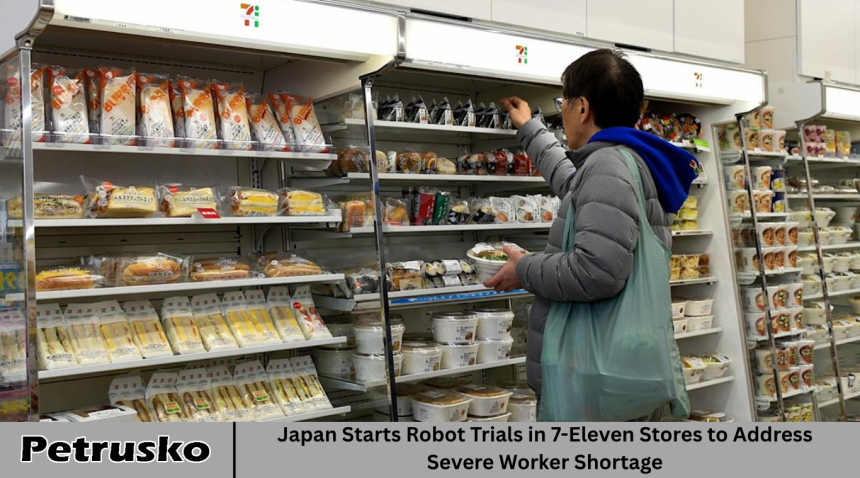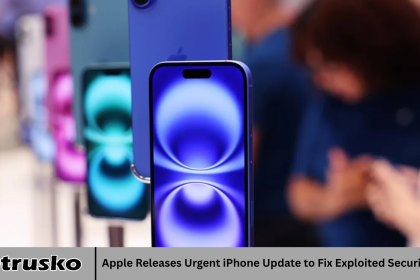Japan is facing a serious problem with a shortage of workers, especially in retail stores like 7-Eleven. To tackle this issue, Japan has started testing robots in 7-Eleven convenience stores. These robots will help with tasks like stocking shelves, cleaning, and even assisting customers. This trial is part of a bigger plan to use technology to make work easier and keep stores running smoothly even when there are fewer workers.
The Worker Shortage in Japan
Japan’s population is aging, and fewer young people are entering the workforce. Many companies, including convenience stores, are finding it hard to hire enough staff. This shortage is causing problems in daily operations, leading to longer working hours for existing employees and sometimes reduced services for customers. Convenience stores like 7-Eleven are very important in Japan because they offer many services and are open long hours, so the shortage has a big impact.
Why Robots Are Being Tested in 7-Eleven
Robots can help solve the worker shortage by doing simple but important tasks. The robots being tested in 7-Eleven stores can stock shelves, clean floors, and provide information to customers. This helps the human workers focus on tasks that need more skill and attention. By using robots, stores can keep running efficiently even if there are fewer employees available. It also improves the experience for customers who visit the stores.
How the Robots Work
The robots use cameras and sensors to move around the store safely without bumping into people or objects. They can carry products, scan shelves to check what needs restocking, and clean the floors automatically. Some robots can also communicate with customers to answer questions or guide them to the right product. These machines are designed to work alongside humans and not replace them completely.
Benefits for Store Employees
Using robots helps reduce the physical burden on employees who normally have to do heavy lifting or repetitive tasks. This can reduce injuries and fatigue among workers. Robots can work long hours without breaks, helping stores remain open and fully stocked. Employees can spend more time helping customers, managing the store, and handling more complex jobs that require human judgement.
Challenges of Using Robots in Stores
Although robots provide many benefits, there are some challenges too. The robots must be reliable and easy to maintain. If a robot breaks down, it could cause delays or problems in the store. Training employees to work with robots and fixing technical issues can be difficult and costly. There is also concern about robots taking jobs from humans, though currently robots are meant to assist rather than replace workers.
Japan’s Vision for the Future of Retail
Japan is a leader in robotics and technology, and the trial in 7-Eleven is just one step toward a future where robots and humans work closely together. The country hopes to develop more advanced robots that can handle even more tasks and make stores smarter and more efficient. This approach is expected to help not only retail but many other industries facing labor shortages.
Global Impact of Robot Use in Retail
The worker shortage is not unique to Japan; many countries face similar challenges. Japan’s example could inspire other nations to adopt robot technology in retail and other sectors. The success of robot trials could lead to wider acceptance of robots as helpful tools in everyday life and work. It also raises questions about how jobs will change in the future and what skills workers will need.
Frequently Asked Questions
What tasks are robots performing in 7-Eleven stores in Japan?
Robots are stocking shelves, cleaning floors, scanning inventory, and assisting customers with information.
Why is Japan facing a worker shortage in retail?
Japan has an aging population and fewer young people entering the workforce, leading to fewer available workers.
Will robots replace human workers in convenience stores?
Currently, robots are designed to assist workers, not replace them. They handle simple tasks to free up humans for more complex work.
How do robots move around safely in stores?
Robots use cameras and sensors to detect people and obstacles, allowing them to navigate safely without collisions.
What are the challenges of using robots in retail stores?
Challenges include robot reliability, maintenance costs, employee training, and concerns about job displacement.
How can robots improve the work environment for employees?
Robots reduce physical strain by taking on heavy or repetitive tasks, helping employees avoid injuries and fatigue.
Could this technology be used in other countries?
Yes, many countries face similar worker shortages, and successful trials in Japan may encourage global adoption of retail robots.
Conclusion
Japan’s testing of robots in 7-Eleven stores is a clear response to the serious problem of worker shortages. These robots help with simple, repetitive tasks and support employees, allowing stores to run more smoothly and serve customers better. While challenges remain, the use of robots represents an important step toward the future of retail and work. It shows how technology can help solve real problems and improve the way we live and work.













